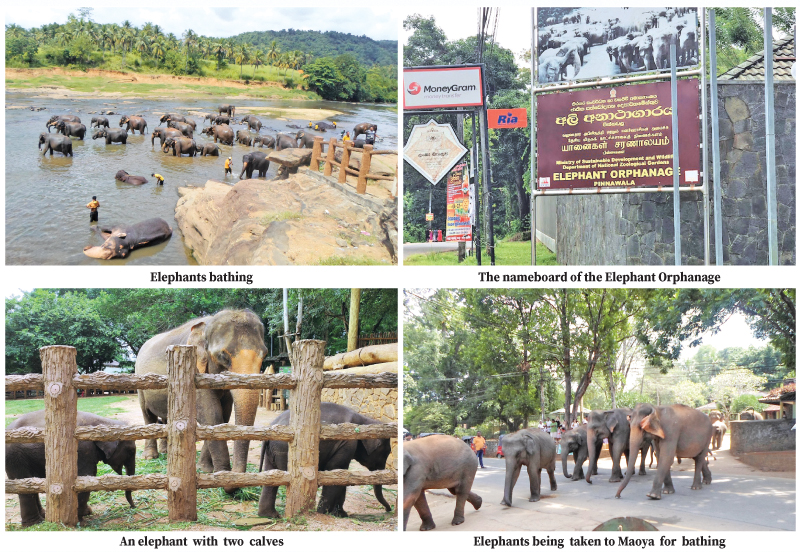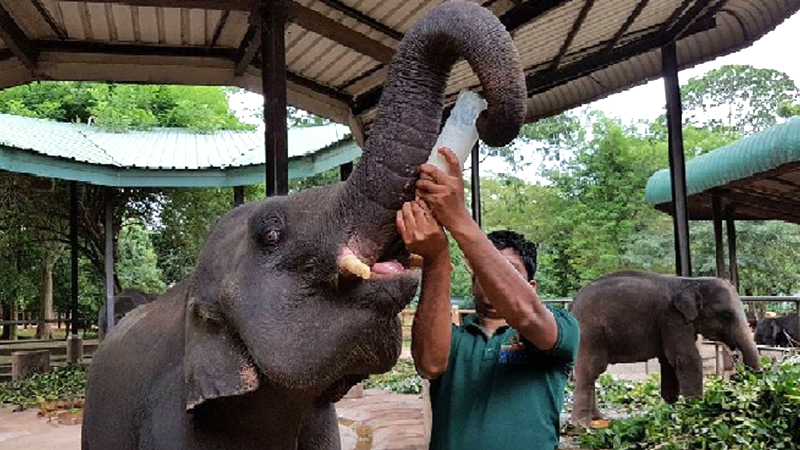The Elephant Orphanage at Pinnawala, Rambukkana, 13 kilometres North East of the Kegalle town is a captive, breeding, and conservation institute for wild elephants. It has become a popular place among local and foreign tourists.
Easiness of finding fodder, availability of sufficient water and the climate in the area have facilitated the setting up of the Elephant Orphanage.
Another reason is the easiness of finding mahouts as most mahouts of the Temple of the Sacred Tooth are from Rambukkana area. There are 70 mahouts in the orphanage of 25 acres.
Elephants are taken to the Maoya river twice a day for bathing, at 10 a.m. and at 2.00 p.m.
According to the officials of the orphanage, Pinnawala has the largest herd of captive elephants in the world. There had been only five baby elephants: Matalee, Vijaya, Neela, Jadura and Kumari at the orphanage at the beginning
It accommodates 89 elephants: 60 males and 29 females from three generations at present.
The orphanage for providing care and sanctuary to orphaned baby elephants that were found in the wild, was established in 1976 by the Department of Wild Life Conservation on a concept of the late P. B. G. Kalugalla, the then Minister of Tourism. It was taken over by the Department of National Zoological Gardens in 1978.
Young elephants sometimes fall into pits and agri-wells in their quest for water during droughts. Some other elephants have been displaced from their wild habitat by development projects or have been found abandoned before weaning, diseased or wounded. There have been several instances where the mother elephant had fallen into a pit and died leaving the baby elephant stranded in the jungle. There have also been instances of adult elephants being killed by those who protect their paddy fields and crops resulting in baby elephants being orphaned.
The elephants in the orphanage range freely as a herd during the day in an area of a few acres. They are herded about 5 kilometres twice a day to drink water and to bathe in the river.
The elephants are fed in their stalls with each adult animal being offered around 250 kilograms of fodder per day.
Visitors can view the care and daily routine of the elephants such as bottle feeding of elephant calves, feeding of other elephants and bathing in the Maoya river.





